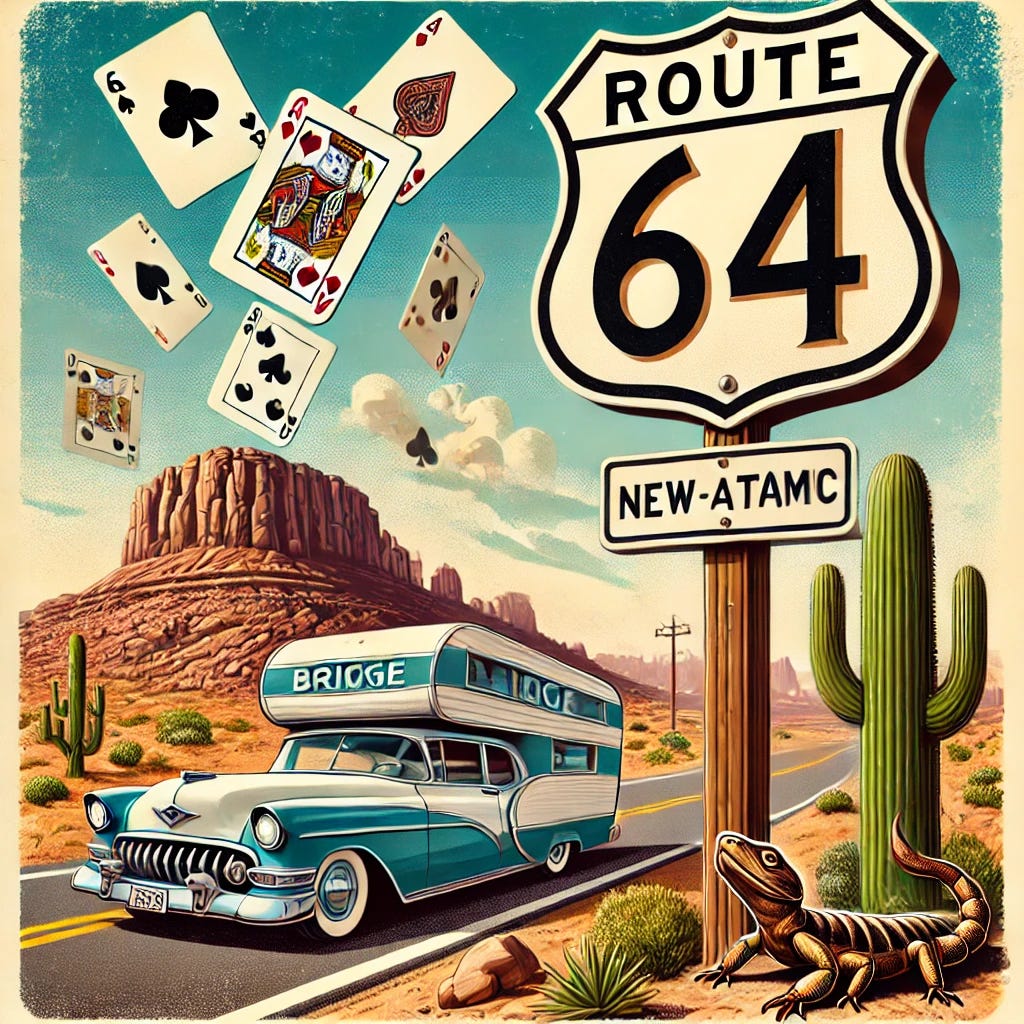There have been many changes to the deal generator lately, most having to do with how file and folder inputs, and file outputs, are handled. Appearance-wise, the most significant change is that the File Saver panel, which was becoming rather crowded with tangentially-related controls, is back to just being a file saver. The deal and recipe accumulators (aka collections, now) and the deal filter were each promoted to first-class status, each with its own panel, for more clarity on their distinct functionality and their interactions. Links to all the relevant new and changed user guide entries are at the bottom of this post.
But first, let’s talk about the number—64—that underlies much of the deal generator’s functionality, especially when it comes to managing output.
As stated in the user guide on Number of Deals, the most deals you can generate at one time is 64. A quick refresher on why that is: if you write a recipe and you want to see the resulting deal with every possible combination of dealer and vulnerability, and with each seat having each type of hand from that recipe in all of those combinations, then you arrive at 4 x 4 x 4 permutations. 64.
Using dealer and vulnerability rotation when generating deals, you will always get board configurations that conform to those on the standard duplicate bridge scoresheet. There are actually just 16 combinations (the first 4 x 4 above) of dealer and vulnerability, so if I wasn’t so interested in moving the hands around from seat to seat, we could be on Route 16 instead of Route 64.
This document shows the 64 configurations. You might want to print it and frame it and display it in a place of honor in your home.
What if you want more than 64 deals? No worries—just click “generate” as often as you like, creating up to 64 deals each time, taking care to then either add those deals to a collection or else save them to a file. Then ponder what in the world you could possibly do with so many deals (which is why I cut it down from the old maximum of 512 deals per click, and began focusing on the largest meaningful number).
While I prefer adherence to standard board numbering, you can easily use the generator to create deals that do not conform to the standard numbering and configuration: just turn off dealer and vulnerability rotation and use any scheme you like. Just be aware that other features of the generator, having to do with making sets of deals from one or more input files, are all based on standard board configurations and in fact they work best when you work with related deals in sets of 64. That said, the program does not validate configurations—it just plows ahead and does things based on input board number, regardless of how the boards were configured. If you deploy my 64-based deal management tools against deals generated willy-nilly with non-standard configurations, the resulting collections of deals may or may not be grouped to your liking.
My advice: when generating new deals in my generator, always have all rotations “on” and always generate in groups of at least 16 if you want all board configurations, and generate in groups of 64 if you want all hand configurations in all board configurations. With other deals generators, keep numbering past 64 if you want to or if you have to—just so you keep varying dealer and vulnerability in the order in which they are varied on the standard duplicate scoresheet.
The 64-centric approach is most relevant to the following features that come into play once deals have already been generated. Each is covered in its own user guide, all included in the user guide directory but also here for quick reference:
Importing all LIN deal files from a folder.
Creating in-memory collections of deals from different sources.
All of the above features may user a very 64-centric feature called the Deal Filter.
Happy dealing!



